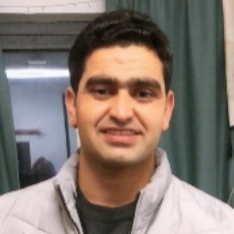International Journal of Intelligent Systems and Applications (IJISA)
IJISA Vol. 17, No. 2, 8 Apr. 2025
Cover page and Table of Contents: PDF (size: 1517KB)
An Optimized YOLOv8-based Method for Airport Bird Detection: Incorporating ECA Attention, MBC3 Module, and SF-PAN for Improved Accuracy and Speed
PDF (1517KB), PP.1-13
Views: 0 Downloads: 0
Author(s)
Index Terms
Airport Bird Detection, Bird Strike Prevention, Attention Mechanism, Multi-branch Convolution, Feature Fusion
Abstract
This research investigation utilizes deep learning object detection algorithms to achieve accurate recognition of birds near airports, thereby addressing the limitations of manual bird detection at airports, including low accuracy slow speed, and the high cost of radar detection. The ultimate goal is to ensure the safe operation of civil aviation. The following are the primary enhancements: First, an ECA (Efficient Channel Attention) attention mechanism was added to the Neck to enhance the network's emphasis on important characteristics. This resulted in a notable improvement in accuracy while only changing a few parameters. Second, by adding branches with various receptive fields, the MBC3 (Muti Branch C3) module was created to improve the expressiveness of the model. Thirdly, the model's right width and depth parameters will be chosen by investigating the effects of various network widths and depths on model performance. Fourth, to solve the problem of feature loss in recognizing tiny bird targets, the SF-PAN (Shallow Feature - Path Aggregation Network) structure was proposed. The model was evaluated using metrics such as mAP@50, FPS, precision, recall, and computational complexity on a test set derived from the dataset. Results show that the enhanced YOLOv8 achieves a mAP@50 of 83.1% and a speed of 31 FPS, a 2.5% improvement in accuracy and a 7 FPS increase over the baseline YOLOv8, while reducing parameters and weight size by approximately 48%. Comparative experiments further validate the model’s superiority over existing algorithms in terms of accuracy and resource efficiency. This upgraded YOLOv8 provides a novel, real-time solution for precise bird detection in challenging airport environments, ensuring safer civil aviation operations.
Cite This Paper
Zia Ur Rehman, Abdul Ghafar, Ahmad Syed, Abu Tayab, Md. Golam Rabbi, "An Optimized YOLOv8-based Method for Airport Bird Detection: Incorporating ECA Attention, MBC3 Module, and SF-PAN for Improved Accuracy and Speed", International Journal of Intelligent Systems and Applications(IJISA), Vol.17, No.2, pp.1-13, 2025. DOI:10.5815/ijisa.2025.02.01
Reference
[1]Qiao, Liang, and Liang Zhang. "Airport bird strike risk assessment and research." In IOP Conference Series: Materials Science and Engineering, vol. 612, no. 5, p. 052071. IOP Publishing, 2019.
[2]Kaur, R., & Singh, S. (2023). A comprehensive review of object detection with deep learning. Digital Signal Processing, 132, 103812.
[3]REDMON J, DIVVALA S, GIRSHICK R, et al. You only look once: Unified, real-time object detection[C]//Proceedings of the IEEE conference on computer vision and pattern recognition. 2016: 779-788.
[4]REDMON J, FARHADI A. YOLO9000: better, faster, stronger[C]//Proceedings of the IEEE conference on computer vision and pattern recognition. 2017: 7263-7271.
[5]REDMON J, FARHADI A. Yolov3: An incremental improvement[C]//Computer vision and pattern recognition. Berlin/Heidelberg, Germany: Springer, 2018, 1804: 1-6.
[6]BOCHKOVSKIY A, WANG C Y, LIAO H Y M. Yolov4: Optimal speed and accuracy of object detection[EB/OB]. (2020-04-23)[2024-04-23].https://doi.org/10.48550/arXiv.2004.10934.
[7]LI C, LI L, JIANG H, et al. YOLOv6: A single-stage object detection framework for industrial applications[EB/OB]. (2022-09-07)[2024-04-23].https://doi.org/10.48550/arXiv.2209.02976
[8]WANG C Y, BOCHKOVSKIY A, LIAO H Y M. YOLOv7: Trainable bag-of-freebies sets new state-of-the-art for real-time object detectors[C]//Proceedings of the IEEE/CVF Conference on Computer Vision and Pattern Recognition. 2023: 7464-7475.
[9]Ma, H., Li, Y., Gao, Y., Zhang, Z., Abuadbba, A., Fu, A. & Abbott, D. TransCAB: Transferable clean-annotation backdoor to object detection with natural trigger in real-world. In 2023 42nd International Symposium on Reliable Distributed Systems (SRDS) (2023, September) (pp. 82-92). IEEE.
[10]Zhang, W., Sun, Y., Xue, K., & Yao, A. Research on modulation recognition algorithm based on channel and spatial self-attention mechanism. IEEE Access (2023).
[11]Tan, K., Ding, S., Wu, S., Tian, K., & Ren, J. A small object detection network based on multiple feature enhancement and feature fusion. Scientific Programming, 2023(1), 5500078.
[12]Wang, J., Yu, J., & He, Z. (2022). DECA: a novel multi-scale efficient channel attention module for object detection in real-life fire images. Applied Intelligence, 1-14.
[13]WANG Q, WU B, ZHU P, et al. ECA-Net: Efficient channel attention for deep convolutional neural networks[C]//Proceedings of the IEEE/CVF conference on computer vision and pattern recognition. 2020: 11534-11542.
[14]Lim, Xin Roy, Chin Poo Lee, Kian Ming Lim, and Thian Song Ong. "Enhanced traffic sign recognition with ensemble learning." Journal of Sensor and Actuator Networks 12, no. 2 (2023): 33.
[15]K. Tong, Y. Wu, and F. Zhou, ‘‘Recent advances in small object detection based on deep learning: A review,’’ Image Vis. Com put. vol. 97, May 2020, Art. no. 103910, doi: 10.1016/j.imavis.2020. 103910.
[16]J. Wang, Y. Chen, Z. Dong, and M. Gao, ‘‘Improved YOLOv5 network for real-time multi-scale traffic sign detection,’’ Neural Comput. Appl., vol. 35, no. 10, pp. 7853–7865, Apr. 2023.
[17]Li, Ning, Wenliang Zhang, Zhaoxu Liu, Kaifeng Liu, Junjie Wang, and Fan Zhang. "PDSE-YOLOv8: a lightweight detection method for internal defects in asphalt roads." Signal, Image and Video Processing (2024): 1-12.
[18]K. Jiang, T. Xie, R. Yan, X. Wen, D. Li, H. Jiang, N. Jiang, L. Feng, X. Duan, and J. Wang, ‘‘An attention mechanism-improved YOLOv7 object detection algorithm for hemp duck count estimation,’’ Agriculture, vol. 12, no. 10, p. 1659, Oct. 2022, doi: 10.3390/agriculture12101659.
[19]Z. Huang, J. Wang, X. Fu, T. Yu, Y. Guo, and R. Wang, ‘‘DC SPP-YOLO: Dense connection and spatial pyramid pooling based Yolo for object detection,’’ Inf. Sci., vol. 522, pp. 241–258, Jun. 2020, doi: 10.1016/j.ins.2020.02.067.
[20]Cheng, Gong, Xiang Yuan, Xiwen Yao, Kebing Yan, Qinghua Zeng, Xingxing Xie, and Junwei Han. "Towards large-scale small object detection: Survey and benchmarks." IEEE Transactions on Pattern Analysis and Machine Intelligence (2023).
[21]T.-Y. Lin, P. Dollár, R. Girshick, K. He, B. Hariharan, and S. Belongie, ‘‘Feature pyramid networks for object detection,’’ in Proc. IEEE Conf. Comput. Vis. Pattern Recognit. (CVPR), Jul. 2017, pp. 936–944, doi: 10.1109/CVPR.2017.106.
[22]Tian, Zhi, Chunhua Shen, and Hao Chen. "Conditional convolutions for instance segmentation." In Computer Vision–ECCV 2020: 16th European Conference, Glasgow, UK, August 23–28, 2020, Proceedings, Part I 16, pp. 282-298. Springer International Publishing, 2020.
[23]H. Liu, F. Sun, J. Gu, and L. Deng, ‘‘SF-YOLOv5: A lightweight small object detection algorithm based on improved feature fusion mode,’’ Sensors, vol. 22, no. 15, p. 5817, Aug. 2022, doi: 10.3390/ s22155817.
[24]L. Kong, J. Wang, and P. Zhao, ‘‘YOLO-G: A lightweight network model for improving the performance of military targets detection,’’ IEEE Access, vol. 10, pp. 55546–55564, 2022, doi: 10.1109/ACCESS.2022. 3177628.
[25]S. Tummala, S. Kadry, S. A. C. Bukhari, and H. T. Rauf, ‘‘Classifi cation of brain tumor from magnetic resonance imaging using vision transformers ensembling,’’ Current Oncol., vol. 29, no. 10, pp. 7498–7511, 2022.
[26]L. Meng, H. Li, B.-C. Chen, S. Lan, Z. Wu, Y.-G. Jiang, and S.-N. Lim, ‘‘AdaViT: Adaptive vision transformers for efficient image recognition,’’ in Proc. IEEE/CVF Conf. Comput. Vis. Pattern Recog nit. (CVPR), New Orleans, LA, USA, Jun. 2022, pp. 12299–12308, doi: 10.1109/CVPR52688.2022.01199.
[27]Guo, Jianyuan, Kai Han, Han Wu, Yehui Tang, Xinghao Chen, Yunhe Wang, and Chang Xu. "Cmt: Convolutional neural networks meet vision transformers." In Proceedings of the IEEE/CVF conference on computer vision and pattern recognition, pp. 12175-12185. 2022.
[28]Y. Zhao, W. Lv, S. Xu, J. Wei, G. Wang, Q. Dang, Y. Liu, and J. Chen, ‘‘DETRs beat YOLOs on real-time object detection,’’ 2023, arXiv:2304.08069.
[29]HU J, SHEN L, SUN G. Squeeze-and-excitation networks[C]//Proceedings of the IEEE conference on computer vision and pattern recognition. 2018: 7132-7141.
[30]Wang, T., Su, J., Xu, C., & Zhang, Y. (2022). An intelligent method for detecting surface defects in aluminium profiles based on the improved YOLOv5 algorithm. Electronics, 11(15), 2304.
[31]SUN H, WANG Y, CAI X, et al. AirBirds: A Large-scale Challenging Dataset for Bird Strike Prevention in Real-world Airports[C]//Proceedings of the Asian Conference on Computer Vision. 2022: 2440-2456.
[32]LIU W, ANGUELOY D, ERHAN D, et al. Ssd: Single shot multibox detector[C]//Computer Vision–ECCV 2016: 14th European Conference, Amsterdam, The Netherlands, October 11–14, 2016, Proceedings, Part I 14. Springer International Publishing, 2016: 21-37.
[33]DUAN K, BAI S, XIE L, et al. Centernet: Keypoint triplets for object detection[C]//Proceedings of the IEEE/CVF international conference on computer vision. 2019: 6569-6578.
[34]ZHAO Y, LV W, XU S, et al. Detrs beat yolos on real-time object detection[EB/OB]. (2023-04-17) [2024-04-23]. https://doi.org/10.48550/arXiv.2304.08069.
[35]REN S, HE K, GIRSHICK R, et al. Faster R-CNN: Towards real-time object detection with region proposal networks[J]. IEEE transactions on pattern analysis and machine intelligence, 2016, 39(6): 1137-1149.




